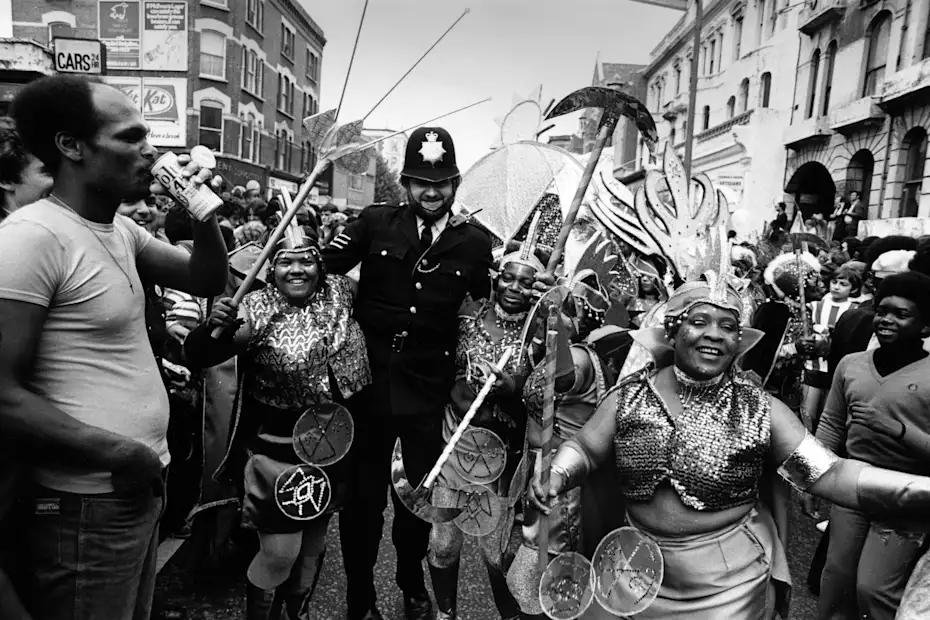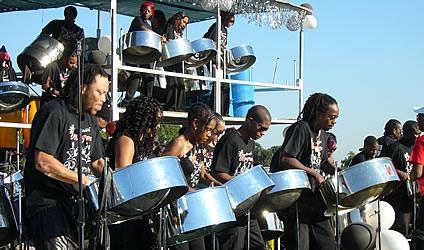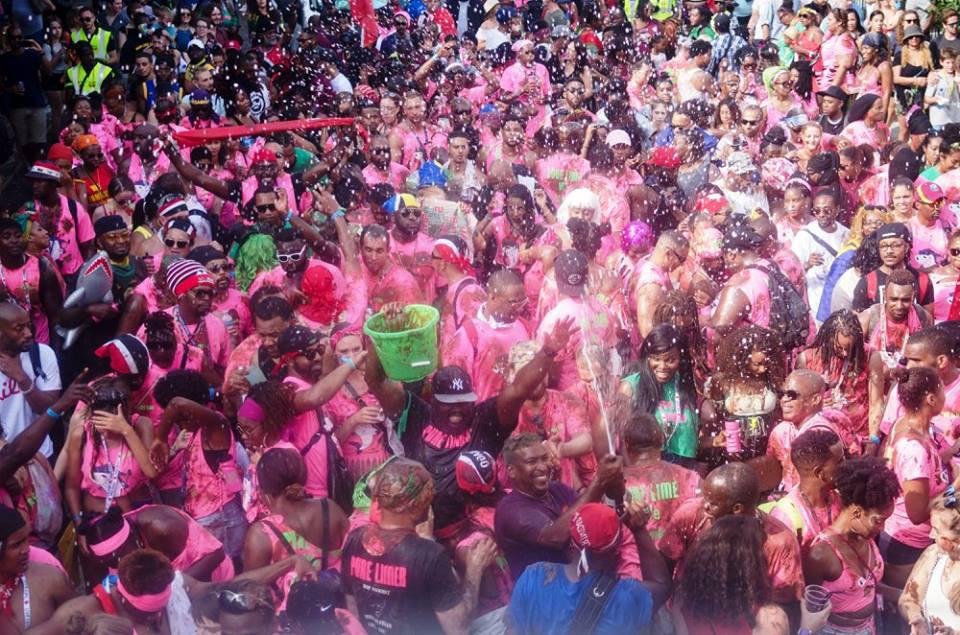
4 minute read
NOTTING HILL CARNIVAL
Helmed by the West Indian community in Britain, it is attended by over one million people every year. This festival is a celebration of dance, music, and culture, which brings people to the city from across the globe, making it London’s most prominent festival.
Although Nothing Hill Carnival guarantees a total sense of euphoria and it’s a celebration of love and creativity, culture and togetherness, its early British narrative was marred with violence.
Advertisement
How the West was won.
Not long after the arrival of the SS Empire Windrush on June 22nd 1948, over 300, 000 West Indians settles here in Britain with the largest population being in Brixton and Notting Hill. Workers brought to Britain from Jamaica, Trinidad and Tobago and other islands, to help fill post-war UK labour shortages.
On the evening of August 29th 1958, outside of Latimer Road Tube station, what started as a disagreement between a mixed-race couple, soon transpired into an argument, with little thought of what was about to unfold. It became a catalyst for several racist attacks by a subset youth movement called the Teddy Boys, who shared racist views regarding West Indian immigration to the North Kensington area and interracial relationships. Notting Hill erupted in violence the following night as hundreds of young white men took to the streets, throwing home-made firebombs at the houses of black families. The violence continued until September 5th and led to the arrest of 108 persons.
The following year, January 30th 1959, in response to the horrific Notting Hill race riots, an indoor Caribbean Carnival was held at the St Pancreas Town Hall and televised by the BBC. It was organised by Claudia Jones, a journalist and influential activist from Trinidad and Tobago, who was the editor for the influential black newspaper, The West Indian Gazette. The Carnival aimed to showcase a cabaret styled Caribbean Carnival with renditions from several Calypsonians including, Mighty Terror and Hi-Fi Steelband, dance troupe. The night ended with a Caribbean Carnival Queen beauty contest and an after-party.
Another important contributor to the formation of Notting Hill Carnival was the London Free School-inspired festival in Notting Hill, which was the first organised outside event, in August 1966. It was arranged by Rhaune Laslett, who was unaware of any indoor events organised by Claudia Jones. This festival was a more diverse Notting Hill event to promote cultural unity. Designed as a street party for the neighbourhood children, it quickly turned into a carnival procession when Russell Henderson’s Steelband, joined in.
A few years later, in 1970, two music bands participated, the Russell Henderson Combo and Selwyn Baptiste’s Notting Hill Adventure Playground Steelband. The art form was growing and other bands were allowed to participate, funding received and permission for an official route granted. Soon afterwards Ebony Steelband and Metronomes Steelband got involved. As the carnival had no permanent staff and head office, the Mangrove restaurant in Notting Hill, owned by Trinidadian, Frank Crichlow, came to function as an informal communication hub and office address for the carnival’s organisers. In 1973 costume bands and steelbands from the various islands participated in the street parade, alongside the introduction of stationary sound systems, which was view by some as a bridge between the two cultures, reggae and calypso.

Notting Hill Carnival in the '70s
picture by Frank Barrett
Within a few years, the event had become a complete Caribbean affair, with around 150,000 people in attendance. However, in that year and several subsequent years, the carnival was marred by riots, in which predominantly Caribbean youths fought with police. This continued through the years as relations between the black community and police had also been problematic.
Despite its troubled past, Notting Hill Carnival continued to grow. As a result, former Mayor, Ken Livingstone arranged for a Carnival review group to investigate and implement guidelines to safeguard Notting Hill Carnival. Today the Carnival consistently attracts over one million people and highlights the Caribbean and black diasporic cultures and is organised by Notting Hill Carnival Limited, supported by the Mayor of London.
Huge efforts have been put in place to ensure the carnival’s core aspects (Calypso, Steelbands and Mas Bands) are protected. Today numerous platforms contribute to the success of Notting Hill Carnival and help educate the younger generation to understand and as a result, appreciate the art form. Notting Hill Carnival has been recognised as Europe’s biggest street festival and is usually held on the August Bank Holiday. Like its Caribbean relatives, Carnival is a season and typically has a wide array of parties and live shows in the build-up to the main parade days.
The annual street festival core events usually kick off on the Saturday evening (6-11pm) with Panorama – a free open-air evening of competitive performance by national steel bands.

Notting Hill Carnival- Panorama
Sunday morning opens with J’ouvert – a traditional procession before sunrise, where participants cover their body in mud, chocolate, paint or powder to celebrate the start of carnival.

Notting Hill Carnival - J'ouvert
The parade ( Family day) that follows showcases children in their flamboyant costumes who dance along the Carnival route to the rhythms provided by mobile sound systems or steelbands.

Notting Hill Carnival - Children's Day 2015
On Monday, the parade is the Grand Finale. This is usually the adult bands on display, with dancers, performers and colourful costumes, static sound systems, Soca floats, Steelbands and delicious Caribbean food.

Notting Hill Carnival - Main Day




